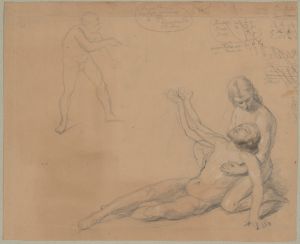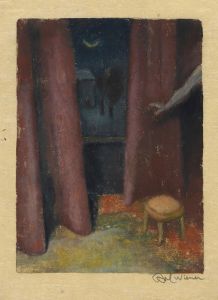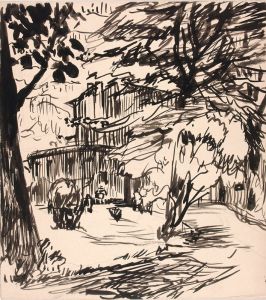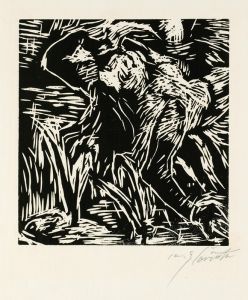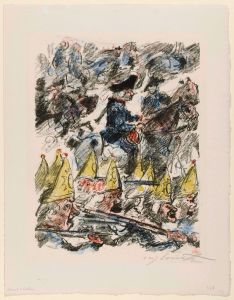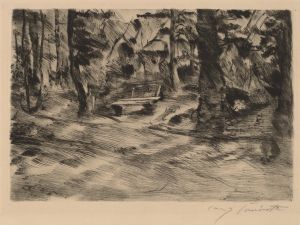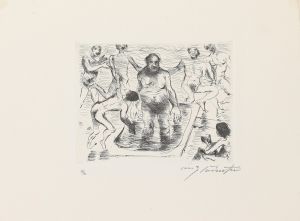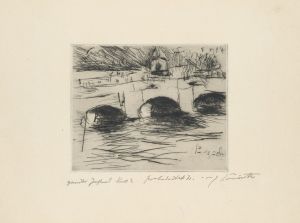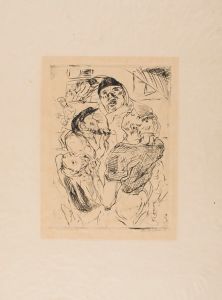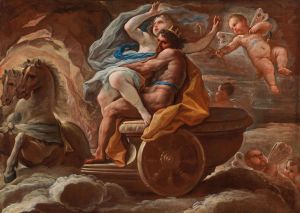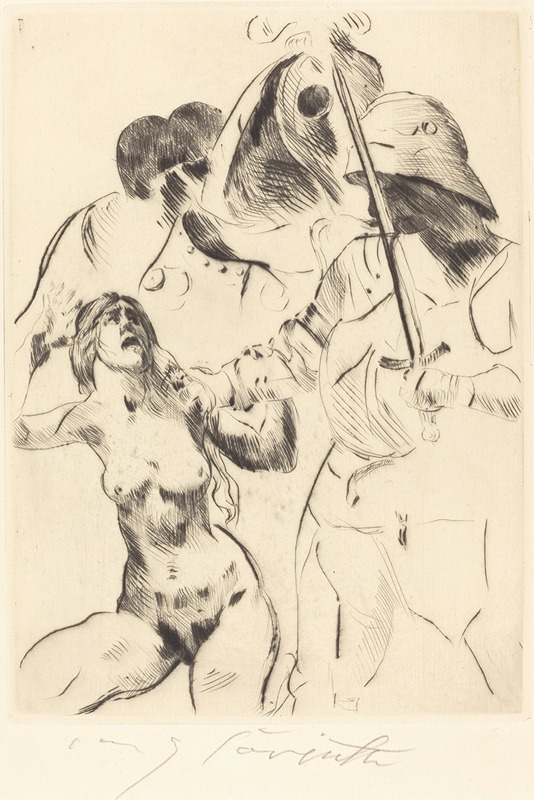
Abduction – III
A hand-painted replica of Lovis Corinth’s masterpiece Abduction – III, meticulously crafted by professional artists to capture the true essence of the original. Each piece is created with museum-quality canvas and rare mineral pigments, carefully painted by experienced artists with delicate brushstrokes and rich, layered colors to perfectly recreate the texture of the original artwork. Unlike machine-printed reproductions, this hand-painted version brings the painting to life, infused with the artist’s emotions and skill in every stroke. Whether for personal collection or home decoration, it instantly elevates the artistic atmosphere of any space.
Lovis Corinth's painting Abduction – III is a work by the German artist, who was a prominent figure in the transition from Impressionism to Expressionism in the late 19th and early 20th centuries. Corinth, born in 1858 in Tapiau (now Gvardeysk, Russia), is known for his dynamic brushwork, vivid use of color, and his ability to convey intense emotion in his works. Abduction – III is one of the many paintings in which Corinth explored themes of mythology, human passion, and dramatic narrative.
The painting, created in 1918, reflects Corinth's mature style, which was characterized by a freer, more expressive approach to form and color. This period of his career followed a significant personal transformation; in 1911, Corinth suffered a stroke that temporarily paralyzed his left side. Despite this setback, he adapted his technique and continued to produce powerful and evocative works. Abduction – III is part of a series of paintings that Corinth created on the theme of abduction, a motif often rooted in classical mythology and literature.
In Abduction – III, Corinth depicts a dramatic and emotionally charged scene. The composition is marked by vigorous brushstrokes and a sense of movement, which heighten the tension and drama of the narrative. The figures in the painting are rendered with a raw, almost visceral energy, emphasizing the physicality and emotional intensity of the moment. Corinth's use of color is bold and expressive, with contrasts that draw the viewer's attention to the central action of the scene.
The painting is housed in the collection of the Nationalgalerie in Berlin, Germany, which holds a significant number of Corinth's works. As with many of his paintings, Abduction – III demonstrates Corinth's ability to blend traditional subject matter with a modern, expressive style, making him a key figure in the development of modern art in Germany.
Lovis Corinth's work, including Abduction – III, continues to be studied and appreciated for its contribution to the evolution of European art. His ability to convey complex emotions and his innovative approach to traditional themes have secured his place as one of the most important artists of his time.





